The Apple iPhone 11, 11 Pro & 11 Pro Max Review: Performance, Battery, & Camera Elevated
by Andrei Frumusanu on October 16, 2019 8:30 AM ESTCamera - Daylight Evaluation: Triple Cameras
Thus far we’ve covered the iPhone 11 series' new A13 SoC, the new display and the phones' excellent battery life. But it’s very evident that above all that, Apple puts the new cameras at the forefront of the new device generation.
The new main camera on the iPhone 11s employ a new generation sensor with full dual-pixel phase-detection autofocus (PDAF) coverage. While the pixels themselves remain the same at 1.4µm in width, Apple will have likely improved the deep trench isolation (DTI) implementation, allowing for the sensor to achieve better detail and less noise.
The wide-angle camera will be the most interesting aspect of the new cameras: the 120° field-of-view of the new module will allow for a completely new perspective on photography for iPhone users, and should be a big new addition to the shooting experience of the phones.
As a note, I had started off the daylight comparison photos on the initial iOS13.0 launch version. By the time I got to the night time shots iOS13.1 was released so those photos were captured on that version. Finally, I added a quick comparison with the newest iOS13.2 and the new Deep Fusion feature towards the end of the daylight pages.
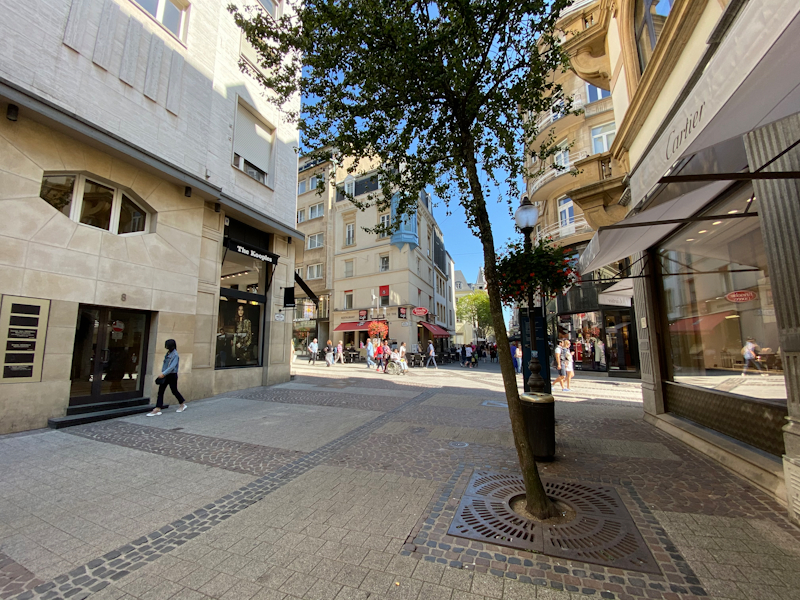
[ iPhone 11Pro ] - [ iPhone XS ] - [ iPhone X ]
[ S10+(S) ] - [ S10+(E) ] - [ Pixel 3 ]
[ P30 Pro ] - [ Xperia 1 ] - [ G8 ]
Starting off with the main camera, we’re seeing a relatively similar exposure between the XS and the 11 in this shot. I feel like the 11’s color reproduction has improved slightly. Another big difference is in the HDR handling as the sunlit areas in the street as well as the top of the building are significantly better defined on the new 11. Detail-wise I can’t say there’s been too much of a change between the two phones in this shot.
On the telephoto camera, which is only available on the Pro models, we’re seeing a slightly brighter picture on the 11. It looks like the 11 has increased noise on the textures here, and we’re seeing a bit less detail in the details further back in the scene.
The wide-angle is a fantastic new addition to the 11 series as it’s able to capture a lot more of the scene in front of you. Apple does very well in terms of maintaining a good consistency between the different cameras and thus exposure and colors are extremely similar.
Comparing the quality of the wide-angle shots to that of other phones however we see that the dynamic range is a bit lacking, and the camera is having trouble in terms of defining the foreground shadows of the trees and the flowers on the lamp-post. The module does well with textures, but is a bit lacking in finer detail.
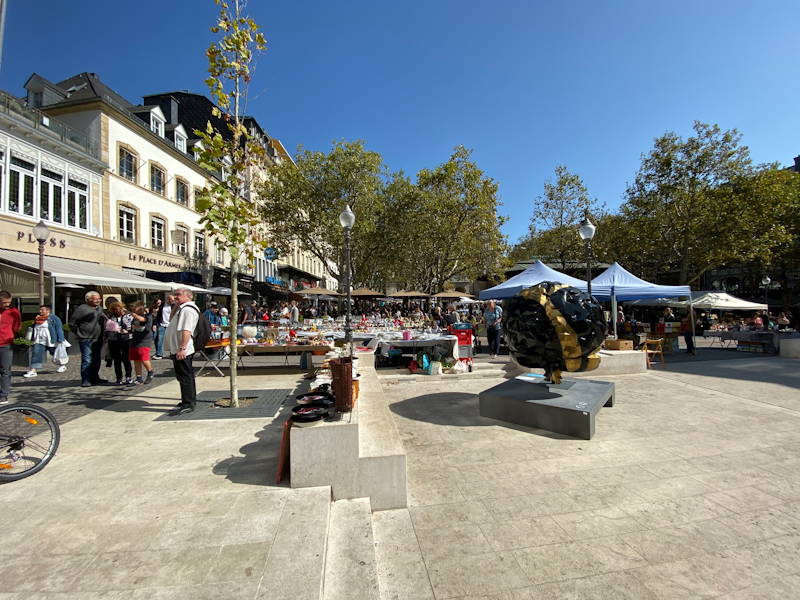
[ iPhone 11 Pro ] - [ iPhone XS ] - [ iPhone X ]
[ S10+(S) ] - [ S10+(E) ] - [ Pixel 3 ]
[ P30 Pro ] - [ Xperia 1 ] - [ G8 ]
In the next shot again, we see very similar exposures between the XS and the new 11. A definitive win for the 11 is the more accurate color temperature, as the XS had the tendency of being a bit warm. It’s very hard to make out any major differences in detail between the phones, but I do notice that the 11 has somewhat less detail in the texture of the ground.
On the zoom lens there’s very little difference again between the phones, however I feel that the 11 has less detail here and it’s as if it’s applying a sharpening filter. The trees particularly look more in focus on the XS – this might be a side-effect of the wider f/2.0 aperture lens on the new 11 module.
The wide-angle here makes it more visible that the color temperature is still a bit warm, as the concrete and stone had a greyer look to them in reality, something more similar to what the S10s are able to produce.

[ iPhone 11 Pro ] - [ iPhone XS ] - [ iPhone X ]
[ S10+(S) ] - [ S10+(E) ] - [ Pixel 3 ]
[ P30 Pro ] - [ Xperia 1 ] - [ G8 ]
On the main camera the improvements on of the HDR can be noticed again here as the 11 is better able to handle the highlights such as the leaves of the trees as well as the white tent – accurately depicting its details while the XS was clipping to white. There’s very little other difference in the details between the shots.
On the telephoto camera, here we’re definitely seeing some much increased noise on the iPhone 11 Pro's module compared to what the XS was able to deliver.
In terms of the wide-angle, I think it’s a matter of preference which phone you like most. What’s important for the iPhone 11 is that the composition between a crop of the wide-angle and the regular main camera looks almost identical and that’s a much appreciated degree of consistency.

[ iPhone 11 Pro ] - [ iPhone XS ] - [ iPhone X ]
[ S10+(S) ] - [ S10+(E) ] - [ Pixel 3 ]
[ P30 Pro ] - [ Xperia 1 ] - [ G8 ]
In this shot the statue in direct sunlight, we see the iPhone 11 Pro is able to resolve more details and remain sharper compared to the XS. This time around, we can also say the same about the telephoto module as the new unit is able to clearly outperform its predecessor.
On the wide-angle, while the iPhone 11 Pro did very well in composition, when we compare the details of the ground against the S10s, we see that it appears very washed out and blurry.
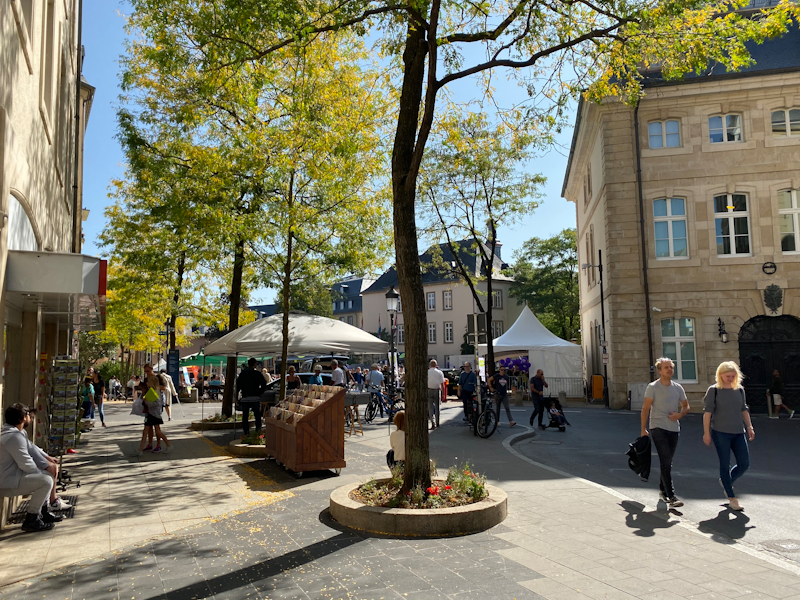
[ iPhone 11 Pro ] - [ iPhone XS ] - [ iPhone X ]
[ S10+(S) ] - [ S10+(E) ] - [ Pixel 3 ]
[ P30 Pro ] - [ Xperia 1 ] - [ G8 ]
In this shot you’d have an extremely hard time telling the iPhone 11 Pro and the iPhone XS apart. The 11 is able to render the tree leaves a little bit livelier, and I can see just a little bit less detail in the pavements, but other than that the shots are almost identical.
The telephoto here again seems to be as finely defined as on the XS – again not sure if this is due to optics or due to processing.
The wide-angle shot is excellent and I think a lot more natural than the Galaxy phones, really only falling second to the P30 Pro’s wide angle unit.
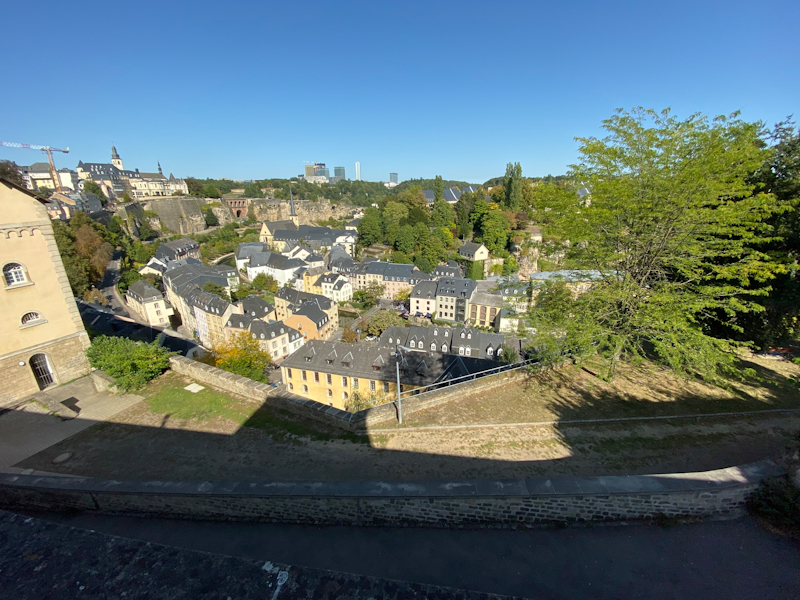
[ iPhone 11 Pro ] - [ iPhone XS ] - [ iPhone X ]
[ S10+(S) ] - [ S10+(E) ] - [ Pixel 3 ]
[ P30 Pro ] - [ Xperia 1 ] - [ G8 ]
The iPhone 11 Pro is able to better extract the saturation of the sunlit foliage in this shot and I think it looks a lot livelier than the XS. Detail between the two generations are even.
In the telephoto modules we see the same saturation change for the better, and this is one instance where the 11 does better in terms of detail as it’s able to have better definition of the roof tiles.
Apple’s wide-angle here is the most natural, even though it’s lacking Samsung’s much wider dynamic range – the latter here went a bit wacko in terms of the luminosity/saturation processing.
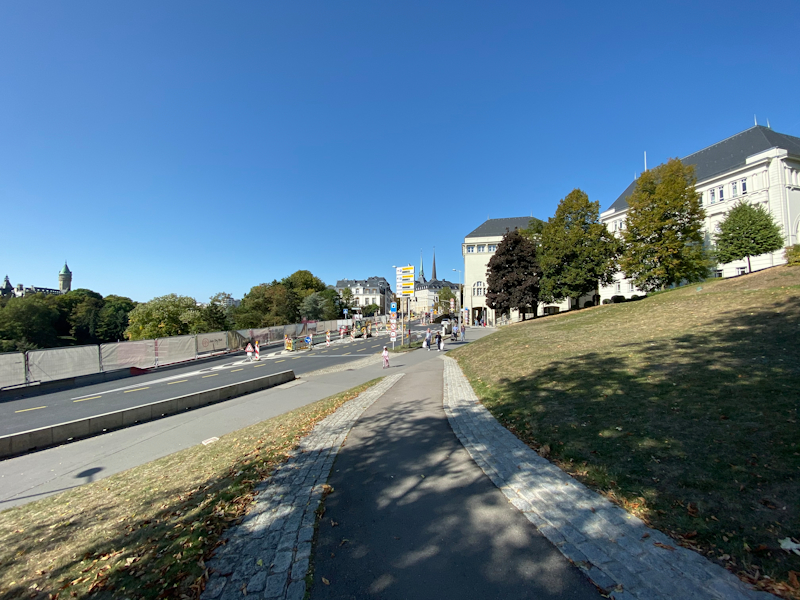
[ iPhone 11 Pro ] - [ iPhone XS ] - [ iPhone X ]
[ S10+(S) ] - [ S10+(E) ] - [ Pixel 3 ]
[ P30 Pro ] - [ Xperia 1 ] - [ G8 ]
Apple’s main improvements here again are color balance and better HDR retaining more details in the highlights of the sun-lit parts.
The telephoto keeps flip-flopping between being an improvement and being a degradation. Here the 11 has again more noise in it and appears less sharp than the XS. Also notice the reds of the traffic signs is a lot more muted on the 11, something also present on the main camera.
Composition of the wide-angle is good although it’s lacking in dynamic range compared to the S10. It’s also noticeably lacking in detail.

[ iPhone 11 Pro ] - [ iPhone XS ] - [ iPhone X ]
[ S10+(S) ] - [ S10+(E) ] - [ Pixel 3 ]
[ P30 Pro ] - [ Xperia 1 ] - [ G8 ]
In the next scene we’re seeing quite a large difference between the 11 Pro and the XS: The 11 is quite a lot brighter but at the same time the sky is also a lot more blown out. The brighter picture does end up more representative of the scene at the time.
On the telephoto the 11 Pro has more contrast, but it’s again noisier. The foreground parts we can see a bit of blur caused by the camera’s shallower depth of field due to the larger aperture.
The wide-angle did very well in terms of exposure here as some phones tended to be too dark.


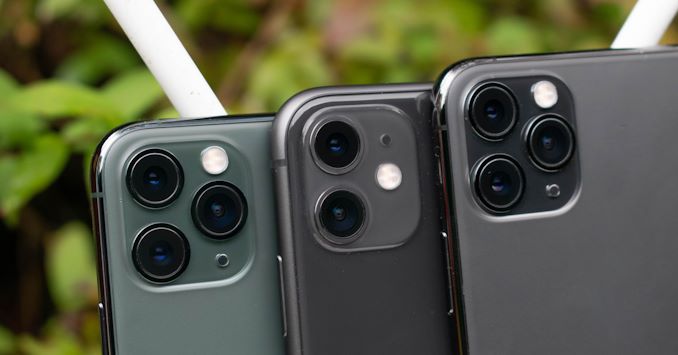








242 Comments
View All Comments
Irish910 - Friday, October 18, 2019 - link
Why so salty? If you hate Apple so much why are you here reading this article? Sounds like you’re insecure with your android phone which basically gets mopped up with by the new iPhones in every area where it counts. Shoo shoo now.shompa - Thursday, October 17, 2019 - link
Desktop performance. Do you understand the difference between CPU performance and App performance? X86 has never had the fastest CPUs. They had windows and was good enough / cheaper than RISC stuff. The reason why for example Adobe is "faster" in X86 is that Intel adds more and more specific instructions AVX/AVX512 to halt competition. Adobe/MSFT are lazy companies and don't recompile stuff for other architectures.For example when DVD encoding was invented in 2001 by Pioneer/Apple DVD-R. I bought a 10K PC with the fastest CPU there was. Graphics, SCSI disks and so on. Doing a MPEG 2 encoding took 15 hours. My first mac was a 667mhz PowerBook. The same encoding took 90 minutes. No. G4 was not 10 times faster, it was ALTIVEC that intel introduced as AVX when Apple switched to Intel. X86 dont even have real 64bit and therefore the 32bit parts in the CPU cant be removed. X86 is the only computer system where 64bit code runs slower than 32bit (about 3%). All other real 64bit systems gained 30-50% in speed. And its not about memory like PC clickers belive. Intel/ARM and others had 38bit memory addressing. That is 64gig / with a 4gig limit per app. Still, today: how many apps use more than 4gig memory? RISC went 64bit in 1990. Sun went 64bit / with 64bit OS in 1997. Apple went 64bit in 2002. Windows went 64bit after Playstation4/XboxOne started to release 64bit games.
By controlling the OS and hardware companies can optimize OS and software. That is why Apple/Google and MSFT are starting to use own SoCs. And its better for customers. There are no reason a better X86 chip cost 400 dollars + motherboard tax 100 dollars. Intel 4 core CPUs 14nm cost less than 6 dollars to produce. The problem is customers: they are prepared to pay more for IntelInside and its based on the wrong notion "its faster". The faster MSFT moves to ARM / RISCV. The better. And if the rumors are right, Samsung is moving to RISCV. That would shake up the mobile market.
Quantumz0d - Thursday, October 17, 2019 - link
Samsung just killed Texas team funding. And you don't want to pay for a socketed board and industry standard but rather have a surfacw which runs on an off the shelf processor and has small workload target in a PC ?Also dude from where you are pulling this $6 of Intel CPUs and I presume you already know how the R&D works right in Lithography ? ROI pays off once the momentum has began. So you are frustrated of 4C8T Intel monopoly amd want some magical unicorn out of thin air which is as fast that and is cheap and is portable a.k.a Soldered. Intel stagnated because of no competition. Now AMD came with better pricing and more bang for buck.
Next from Bigroom Mainframes to pocket PC (unfortunate with iOS its not because of no Filesystem anf Google following same path of Scoped Storage) microsoft put computers in homes and now they recently started moving away into SaaS and DaaS bs. And now with thin client dream of yours Itll be detrimental to the Computer HW owners or who want to own.
We do not want a Propreitary own walled gardens with orwellian drama like iOS. We need more Linux and more powerful and robust OS like Windows which handles customization despite getting sandbagged by M$ on removing control panel slowly and migrating away from Win32. Nobody wants that.
https://www.computerworld.com/article/3444606/with...
jv007 - Wednesday, October 16, 2019 - link
The lighting big cores are not very impressive this time.From 4 Watt to 5 Watt a 25% increase in power for 17% more performance.
Good for benchmarks (and the phone was actively cooled here), but not good for throttling.
7nm and no EUV, maybe next year with 5nm and EUV will improve seriously.
I wonder if we will see a A13X.
name99 - Wednesday, October 16, 2019 - link
"The lighting big cores are not very impressive this time"A PHONE core that matches the best Intel has to offer is "not impressive"?
OK then...
Total Meltdowner - Thursday, October 17, 2019 - link
Comparing this CPU to intel is silly. They run completely different instructions.Quantumz0d - Sunday, October 20, 2019 - link
It has been overblown. The Spec score is all the A series chips have. They can't replace x86 chips even Apple uses x86 cores with Linux RHEL or Free OS Linux distribution to run their services. Whole world runs on the same ISA. These people just whiteknight it like a breakthrough while the whole iOS lacks basic Filesystem access and the latest Catalina cannot run non notarized apps.Also to note the Apple First party premium optimization, that Apple pays for companies like Adobe. If you run MacOS / Trashbook Pro BGA / iOS on any non optimized SW it will be held back both on power consumption and all. It's just a glorified Nix OS and with the first party support it keeps floating. They missed out on the mass scale deployment like Windows or Linux and that's going to be their Achilles heel along with the more transformation of MacOS into iOS rather than opposite.
It's really funny when you look how 60% of the performance is max that one can get from MacOS based HW/Intel machines due to severe thinning on chassis for that sweet BGA appeal and non user serviceable HW while claiming all recycled parts and all. I'm glad that Apple can't escape Physics. VRM throttling, low quality BGA engineering with cTDP garbage etc. Also people just blatantly forget how the DRAM of those x86 processors scales with more than 4000MHz of DDR4 and the PCIe lanes it pushes out with massive I/O while the anemic trash on Apple Macs is a USB C with Dongle world, ARM replicating the same esp the Wide A series with all the Uncore and PCIe I/O support ? Nope. It's not going to happen. Apple needs to invest Billions again and they are very conservative when it comes to this massive scale.
Finally to note, ARM cannot replace x86. Period. The HPC/ DC market of the Chipzilla Intel and AMD, they won't allow for this BS, Also the ISA of x86 is so mature plus how the LGA and other sockets happen along. While ARM is stuck with BGA BS and thus they can never replace these in the Consumer market.
Let the fanboys live in their dream utopia.
tipoo - Thursday, October 17, 2019 - link
Being that the little cores are more efficient, and the battery is significantly larger, maybe they allowed a one time regresion in peak performance per watt to gain that extra performance, without a node shrink this year.zeeBomb - Wednesday, October 16, 2019 - link
the time has come.joms_us - Wednesday, October 16, 2019 - link
Show us that A13 can beat even the first gen Ryzen or Intel Skylake , run PCMark, Cinebench or any modern games otherwise this nonsense desktop level claim should go to the bin. You are using a primitive Spec app to demonstrate the IPC?I can't wait for Apple to ditch the Intel processor inside their MBP and replace with this SoC. Oh wait no, it won't happen in a decade because this cannot run a full pledge OS with real multi-tasking. =D